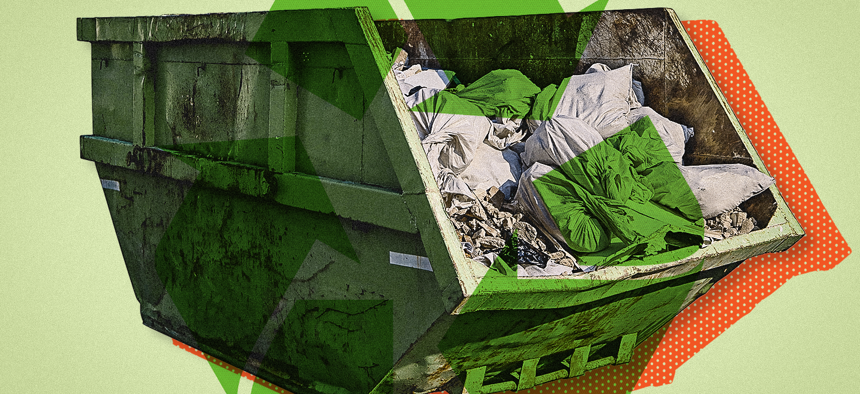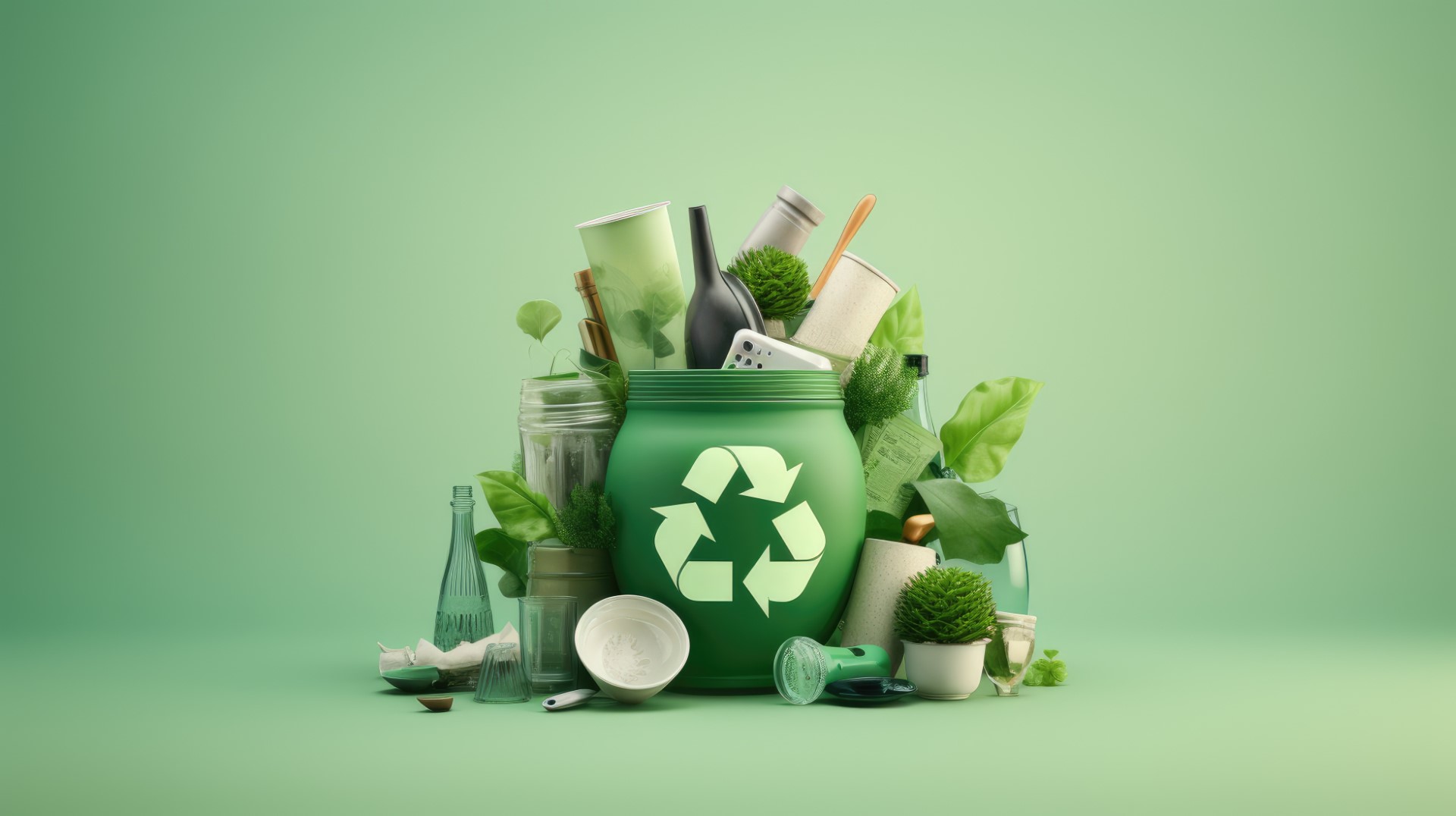Recognizing the Category and Handling of Various Kinds Of Waste
Efficient waste administration is crucial for environmental sustainability, requiring a thorough understanding of the category and handling of numerous waste kinds. House waste, commercial byproducts, hazardous products, digital refuse, and natural remnants each demand unique protocols to ensure safety and security and reduce environmental damages.

Family Waste
Household waste, incorporating a broad variety of discarded products generated from everyday living activities, stands for a significant part of the overall waste stream - recycling lives services. This group consists of organic waste such as food scraps, backyard clippings, and paper products, along with inorganic products like plastics, metals, and glass. The diverse nature of home waste demands reliable classification and administration to minimize environmental influence and promote lasting living techniques
Effective home waste administration starts with partition at the source, facilitating recycling, composting, and secure disposal. Organic waste, for example, can be composted to generate nutrient-rich soil modifications, minimizing landfill worry and improving dirt health and wellness. Recyclable materials, consisting of paper, glass, and certain plastics, can be refined and repurposed, lowering and conserving sources energy usage related to brand-new material manufacturing.
Additionally, hazardous household waste such as batteries, electronic devices, and cleansing chemicals needs specialized dealing with to stop soil and water contamination. Public awareness campaigns and convenient disposal choices play important duties in making sure proper disposal and recycling of these products. By carrying out robust waste decrease techniques and cultivating area involvement, districts can significantly alleviate the ecological impact of home waste.
Hazardous Waste
Hazardous waste, a major contributor to international waste generation, includes a varied variety of products produced by production, construction, and various other industrial tasks. This group includes by-products such as scrap steel, plastics, rubber, chemicals, and other deposits. The make-up and volume of industrial waste can vary considerably relying on the market and production processes included. Effective administration of commercial waste is critical for minimizing environmental impact and promoting sustainable practices.
The handling of commercial waste commonly involves numerous processes: collection, partition, treatment, and disposal. Collection systems are developed to effectively gather waste products from numerous sources within an industrial procedure. Segregation is crucial, as it ensures recyclable products are separated from non-recyclable ones, which can be routed towards appropriate recycling or disposal networks. Treatment procedures, including physical, chemical, and organic techniques, are employed to lower the poisoning, volume, and environmental impact of the waste. Ultimately, disposal techniques like landfilling or incineration are used for waste that can not be reused or treated.
Taking on strategies such as waste reduction, resource recovery, and recycling can dramatically minimize the burden of hazardous waste on the setting, adding to even more lasting commercial practices.
Hazardous Waste

Destructive wastes can harm or ruin living cells and materials. Combustible wastes can easily stir up, positioning fire threats, while reactive wastes can create explosions or launch toxic gases upon call with various other compounds.
Effective contaminated materials management includes several crucial practices: recognition and segregation of unsafe materials, secure transport and storage, and appropriate treatment and disposal. Therapy techniques may consist of chemical incineration, stablizing, and neutralization. Regulative compliance is crucial, led by frameworks such as the Source Conservation and Healing Act (RCRA) in the USA, which guarantees secure and environmentally audio administration of unsafe waste.
Electronic Waste
Digital waste, typically abbreviated as e-waste, stands for an expanding challenge in waste monitoring due to the quick obsolescence of technology. This classification includes a wide variety of discarded electronic tools, consisting of mobile phones, computer systems, tvs, and household home appliances. The complexity of e-waste exists in its make-up; these items consist of a mixture of important materials such as gold and copper, in addition to dangerous substances discover here like mercury, lead, and cadmium.

Regulations and regulations, such as the European Union's Waste Electric and Electronic Devices (WEEE) Directive, goal to promote liable e-waste management. These plans mandate manufacturers to promote the collection and recycling of electronic items, consequently decreasing the worry on garbage dumps and decreasing environmental contamination.
Organic Waste
Organic waste, incorporating naturally degradable products such as food scraps, backyard trimmings, and agricultural deposits, constitutes a significant section of the local strong waste stream. This sort of waste is remarkable not only for its quantity but additionally for its prospective ecological impact if not handled appropriately. Organic waste can break down anaerobically in garbage dumps, generating methane, a powerful greenhouse gas contributing to climate modification.
Correct handling of natural waste involves several techniques. Composting is a commonly taken on approach, transforming organic materials into useful garden compost that can improve dirt and support sustainable agriculture. This process likewise minimizes the quantity of waste sent to garbage dumps. An additional method is anaerobic food digestion, which damages down natural issue in the absence of oxygen, producing biogas that can be made use of as an eco-friendly energy source. Additionally, diverting food waste from garbage dumps via contribution programs can relieve food instability while reducing waste.
Municipalities and services are significantly acknowledging the significance of organic waste management. Applying thorough natural waste recycling programs not only minimizes ecological impacts but additionally lines up with broader sustainability objectives, advertising a circular economic climate where resources are continually reused and repurposed.
Conclusion
Efficient waste management and ecological protection necessitate a thorough understanding of the category and handling of numerous waste kinds. Applying appropriate methods for each waste kind makes certain safe and accountable waste management methods, inevitably adding to the protection of communities and public wellness.
Reliable waste management is pivotal for environmental sustainability, needing a thorough understanding of the category and handling of various waste types.Home waste, including a broad variety of disposed of products created from day-to-day living activities, represents a significant component of the overall waste stream.Industrial waste, a major contributor to global waste generation, encompasses a diverse range of materials produced by manufacturing, building, and other industrial activities (recycling lives services).Dangerous waste, an important problem in waste monitoring, consists of products that present substantial dangers great post to read to human health and wellness and the setting due to their hazardous, destructive, combustible, or responsive learn this here now homes.Organic waste, including biodegradable materials such as food scraps, lawn trimmings, and agricultural residues, comprises a substantial section of the local solid waste stream